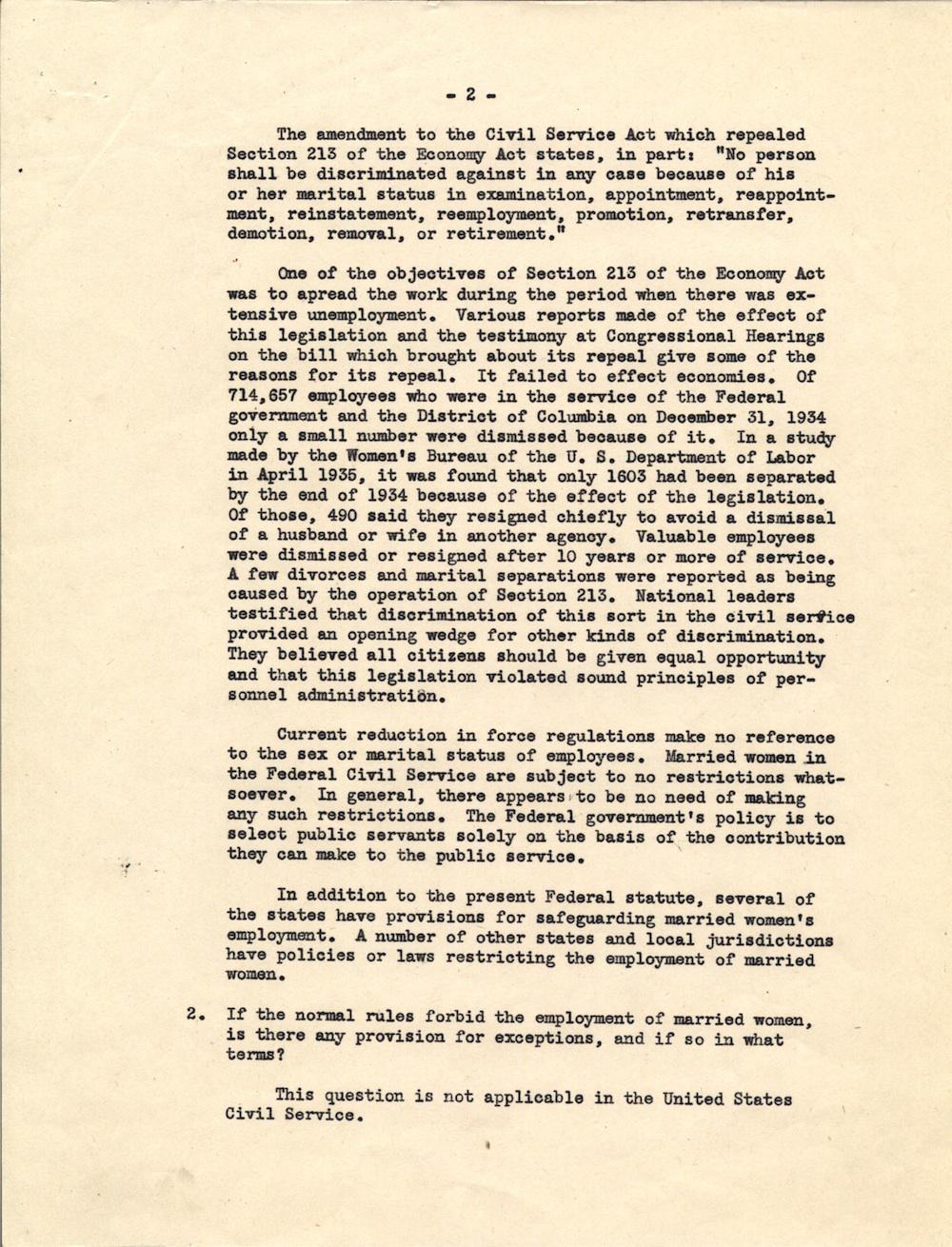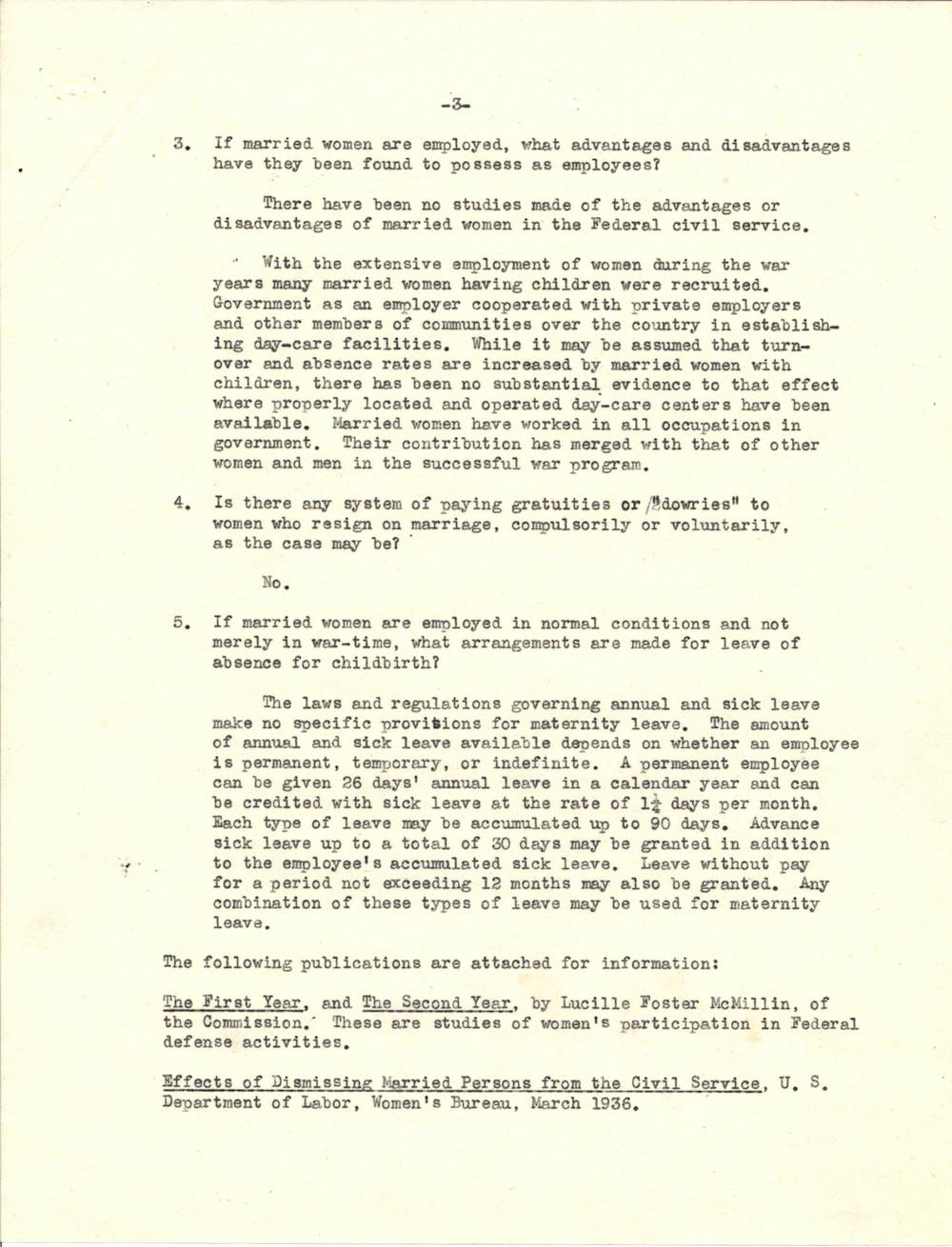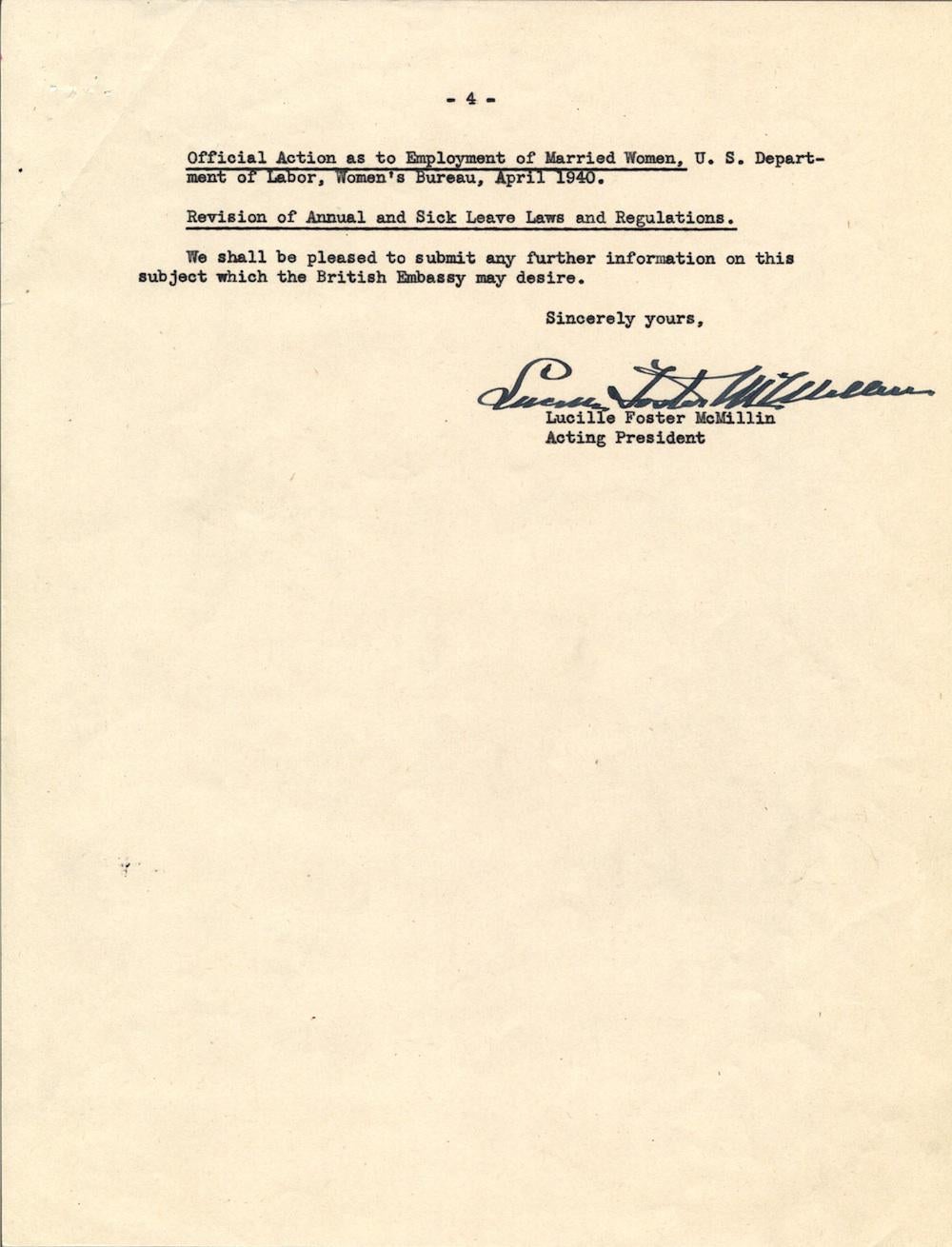The Vault is Slate’s history blog. Like us on Facebook, follow us on Twitter @slatevault, and find us on Tumblr. Find out more about what this space is all about here.
At the end of World War II, writes archivist David Langbart on the National Archives’ Text Message blog, a British committee charged with looking into the practice of barring married women from serving in the U.K.’s civil service wrote to ask the American Civil Service Commission its opinion on the matter. This document contains replies from Lucille Foster McMillin, then the acting president of the Commission.
Women had sought and gained employment in the U.S. civil service at an increasing rate since the institution of a merit-based system in 1883. In 1920, the system opened all classes of civil service examinations to women, but allowed those in charge of hiring to decide whether they wanted a man or a woman for the job. (A 1952 pamphlet advertising federal jobs for women warned applicants that this hiring rule was still in effect.) Women who did get hired tended to land lower-paying clerical jobs. And many married workers had been forced out of the service by emergency measures enacted during the Depression.
Nonetheless, this document’s responses to the five British questions show a degree of pride in the American record. Married women “have been employed regularly for many years in the civil service of the United States,” McMillin wrote to the Assistant Secretary of State who had passed along the British request.
Those Depression-era marital employment restrictions had been, from McMillin’s perspective, a failure. “Valuable employees were dismissed or resigned after 10 years or more of service” and “a few divorces or marital separations were reported as being caused” by the emergency measures. The reductions in force foreseen for the postwar era wouldn’t take marital status into account.
A wartime lesson was on McMillin’s mind. She wrote that married women—even those with children—would show up for work so long as “properly located and operated day-care centers,” such as those provided during the war, were available. Since federal provisions for maternal leave were minimal, these day-care centers—which vanished in the years after McMillin sent this letter—would obviously be crucial.

National Archives.

National Archives.

National Archives.

National Archives.